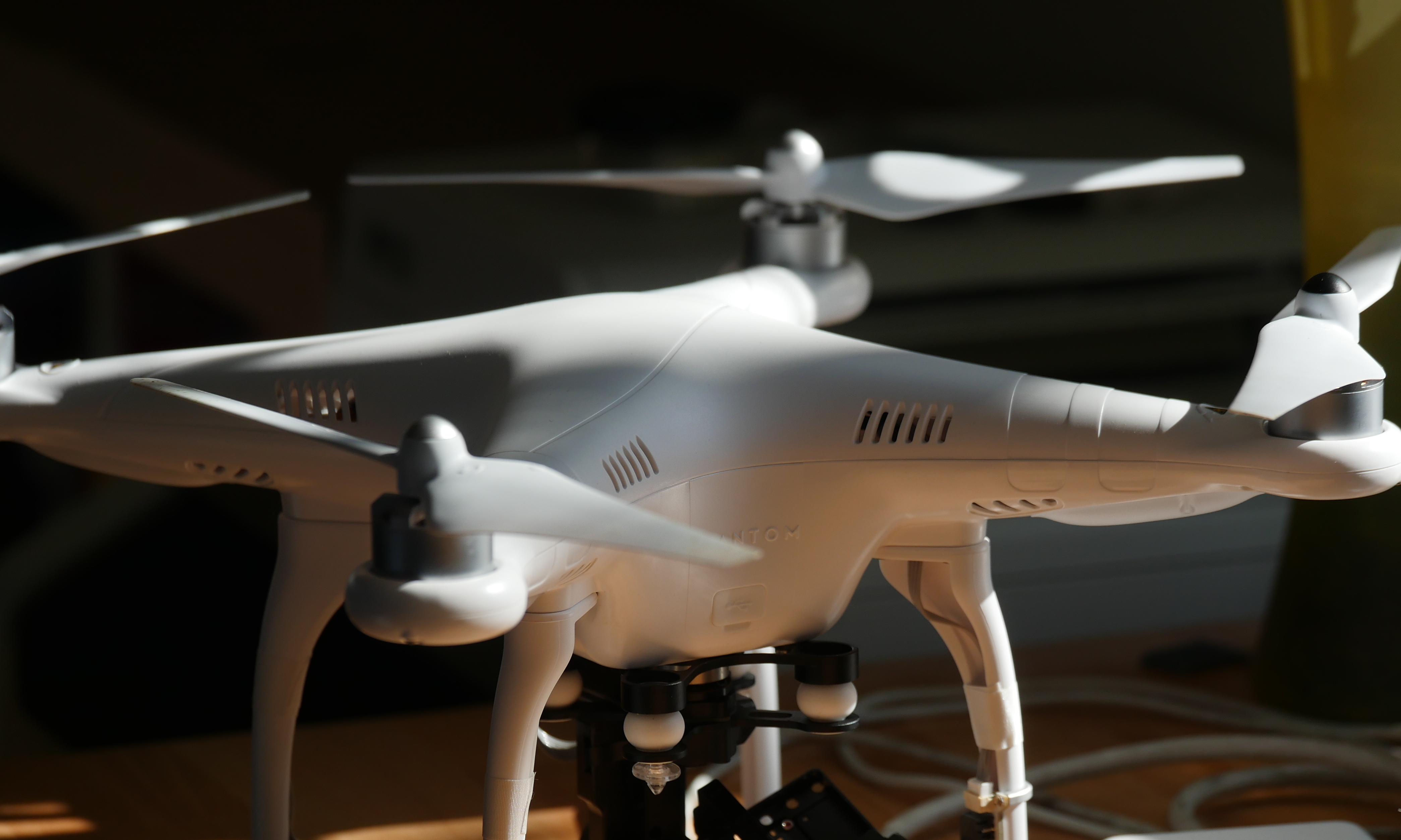Last month in DC a commercially-available quadcopter crashed into the White House and brought new public interest into the regulation of drones. Only a week before the incident, the Department of Homeland Security held a conference open to civilians but explicitly closed to the press to demonstrate, among other capabilities, a similar quadcopter strapped to 3 pounds of inert explosive.
DJI, the China-based manufacturer of the drone in use, released a mandatory firmware update to geofence a 15.5 mile radius around downtown Washington, DC, only to ask users to roll back their update due to “unanticipated flight behavior.” Even if the update worked, it would only have been applicable to Phantom 2 models, and not the Phantom 1 that was used in the White House incident. While these efforts are a start, security experts are skeptical that such techniques would deter a terrorist.
But last week while national security was struggling with what to do with drones in DC, the first-ever Drones for Good Challenge in Dubai sought to “find the best uses of drones to public services and improving people’s lives.” After reviewing over 800 submissions from 57 different countries, the $1 million prize was awarded to Swiss company Flyability, for creating a “collision-tolerant drone” designed to enter hostile environments such as a burning building filled with smoke without endangering aid workers.
But how do we incentivize more drones for good and fewer drones for terrorism?
The Federal Aviation Administration is still struggling to finalize drone regulations after being ordered to do so in 2012 by Congress. But the concern among hobbyists is that rushing the regulatory process could create burdensome rules that hamper innovation. One solution is “regulatory sandboxing”, where some initial constraints are relaxed while rules are still being made, keeping a focus on public safety. The hope is that reducing the hidden costs of burdensome regulations will spur innovation here in the US. For example, Amazon is testing their drone delivery services in Australia due to regulatory opposition in the U.S.
But reducing regulations isn’t enough. Organizations such as the UAViators: Humanitarian UAV Network seek to support a global network of UAV hobbyists to share information and promote community engagement. Expanding that network further will be an effort in education as much as drone delivery. Digital Democracy, for example, helped a community in Guyana build a drone to map deforestation. But those efforts were coupled with the drones becoming something more. According to Digital Democracy’s Gregor MacLennan:
We didn’t want to just fly into Guyana and fly a drone over the local villages. Our interest was whether this technology could be something that can be used and controlled by the communities themselves, and become a tool of empowerment for helping them have more of a say in their own future. We wanted the Wapichana to be able to repair it themselves, fly it themselves, and process the images to use for their own means.
In blurring the boundaries between new technology, STEM education, and sustainable development, the language and endeavors of drones for development are aligning with another frontier in development: 3D printing. And no surprise, it’s already possible to dream of printing your own drone and drone parts. Voxel8, a company founded and run by several Harvard and MIT professors, just released a developer kit for 3D electronic-device printer shipping in late 2015.
As the frontiers of development become the present of implementation, regulation and education will continue to determine the boundaries of what is possible.



